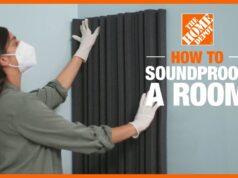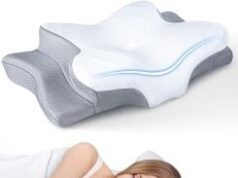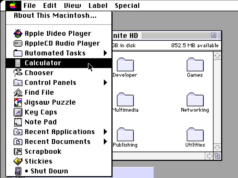
Starting seeds certainly seems like it should be simple: chuck some seeds into soil, park them near a window, and wait for your new green friends to join the party, right? Sadly, that’s not the case. It’s definitely doable, but you’ll need a bit of setup to be successful. There are a whole host of reasons to really consider whether you’re ready get into seed starting in the first place, but if you decide you’re ready, you’ll need the right gear to ensure you have enough heat, moisture, light, and space.
There are many ways to grow seeds, and if you have a method that works for you, don’t let me dissuade you from continuing to do so. But I’ve been using a method that doesn’t require a ton of time or physical work, with little waste and a high rate of success. My methods are cobbled together from many great gardeners I’ve had the privilege of learning from over the years, and now I’m happy to pass that knowledge to you.
Building (or buying) the right shelving
To start, plan your shelving. You will most likely grow your seeds in what’s known as “1020” trays (more on those below), which is a standardized size of 10 inches by 20 inches. The important thing here is to plan for shelving with the right depth and width to accommodate those trays. Whether you purchase commercial shelving or build your own, a shelf depth of at least 11 inches means you can only fit the trays the long way, and a depth of at least 21 inches means you can fit the trays side by side the short way.
Shelves that work as seed-starting stations:
Accommodate eight 1020 trays with a 39-inch shelf height: 5-Tier Heavy Duty Boltless Steel Garage Storage Shelving Unit (48 inches wide by 78 inches high by 24 inches deep)
Accommodate 14 1020 trays with a 39-inch shelf height: 4-Tier Industrial Duty Steel Freestanding Garage Storage Shelving Unit in Black (77 inches wide by 78 inches high by 24 inches deep)
Accommodate 32 1020 trays with a 22-inch shelf height: 5-Tier Industrial Duty Steel Freestanding Garage Storage Shelving Unit in Black (90 inches wide x 90 inches high x 24 inches deep)
Spacing between shelves is also important: Plan to accommodate grow lights hanging from the shelf above and allow room for the plants to grow, keeping the lights far enough away so as not to burn them. As you continue growing seeds over the years, you’ll notice that different plants grow inside to different heights before they go outside. For instance, you plant herbs long before they get too tall, but your tomatoes might need a lot of vertical space. For that reason, you can space the shelves at different heights, but I have spaced my shelves at 25 inches, 25 inches, and 22 inches, pictured below.

Credit: Amanda Blum
Setting up your lights
The biggest mistake I see in amateur seed starting is inadequate light. The reality is that you need to imitate the sun, and a small directional plant light isn’t going to cut it. Without enough light, seedlings stretch to find it and become leggy and weak. You want those watts as close to the plants as possible without burning them. Traditionally, growers I follow have stuck with incandescent and fluorescent bulbs because they have tremendous wattage and some heat. They also suck energy and can be hard to dispose of, so like a lot of people, I’ve moved to LEDs. In the setup described above, you’ll be running lights along the length of the shelves. If you’ve got the trays running the long way as well, you’ll only need two (but three wouldn’t hurt) lights along the length. If you’re running trays the short way, use four lights.
These lights will throw a beam that is wider than the light itself, but you should ensure that all the trays are covered end to end. Lights come in different lengths, so you can buy the lengths you need for your specific space to cover everything. Since I started, I’ve been using Barrina lights, and haven’t had any burnouts with any over the last six years. There are certainly other brands, I just haven’t personally tested them. LED lights can usually be linked together, and though the lights come with tons of linking extensions, you can easily buy more if you need to. I like to reconfigure my lights a few times a year based on what I’m growing and how many lights I need.
As you suspend the lights from the shelf above, keep in mind that you will need to be able to adjust them up and down over the season. They’ll start very low, just over the seed trays, and will get raise as the plants grow. Shoot for 6 to 8 inches of clearance to avoid burning. You can set up a single eye hook and chain to the end of each light, but I would recommend creating a system in which all the lights attach to a single bar or rack that you can raise and lower. I created such a frame using a piece of wood (1 inch by 2 inches), attached the lights to the bottom of the frame, and then hung the frame using the eye and chain method described above. I’m sure there’s an even more efficient way using pulleys, if you’re feeling crafty.

Credit: Amanda Blum
Temperature control
It’s really simple: Seeds wait for the sun to warm the Earth enough before they’ll sprout. To trick seeds into sprouting inside, you need to heat them without cooking them. To do this, use heat mats made specifically for this purpose, plus a temperature controller. Choose heat mats that will cover the shelves without overlapping. If you’re only growing on a single 1020 tray, you can find a mat exactly that size, but they come in a variety of other sizes, too.
Next, you need a meter that ensures the soil won’t get too hot or cold. Since having a thermostat for each mat would be expensive, I get one that can connect to multiple mats. When the soil is too cold, it turns the mat on, and when it’s too hot, it turns it off.
Heat mats and thermostats:
Set up the grow trays
Now we’re getting to the good stuff: the cells themselves. It’s important to consider that different seeds need different size cells. Luckily, the 1020 trays come with different cell size options; typically you’ll find trays with 50 cells, 72 cells, or 128 cells. Tomatoes and most nightshades benefit from the larger cells in a 50-cell tray, while many flowers do just fine in a 128. Over time, you’ll figure out what you need.
Many companies produce these plastic 1020 seed trays, and you’ve likely encountered them at the nursery. Generally, those are single-use plastic that disintegrate in the sun and create a lot of waste. To avoid this, some people have changed to a method called soil blocking, which doesn’t use a tray at all, but uses a tool to create small blocks of soil that can stand on their own, and you transplant those directly into the garden. For years, I used that method, but it’s a lot of work to create the blocks—in an effort to reduce that workload, I have switched to a new breed of hefty, reusable molded plastic seed trays that have aeration built in, so they perform as well as seed blocks without all the work. When it’s time to pull these out of the seed tray, you just stick your finger in the bottom and they pop right out with a fantastically developed root system.
Since I grow inside, I use a system called bottom watering in which the seed trays sit in a bottom tray filled with water. This way, the seedlings can wick up only the water they need. Although I have many of these, I am slowly replacing them with the Neversink version, because it’s much sturdier, which will become important when you want to use these year after year.
Finally, you need a dome on the trays during the germination stage. This keeps humidity on the seed and actually reduces how much you need to water since there’s almost no surface evaporation. You’ll remove these once the tray has germinated. Neversink sells these as well, but you can buy them inexpensively; any will do fine.
Seedling trays, bottom watering trays, and humidity domes:
Use a fan to encourage strong stems
A mistake I made the first year I started seeds was thinking I wanted the most humid environment possible, but that’s not really accurate. Plants need humidity to start germinating, but after that, too much humidity can help spread disease and lead to fungus and gnats.
To avoid this, I now always have a small clip-on fan at the end of each row to blow on my small seedlings once they’ve got enough leaves. The breeze helps strengthen the stems of these plants and moves air around. Any small clip-on fan will do.
Start small
If all of this seems overwhelming, remember this: You can start with one tray on a small heat mat under a decent plant light, and see how you like it before investing in a full shelving unit setup. If you’ve tried seeding before without much success, try this system to see if it’s more efficient or higher-yielding.










